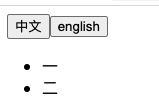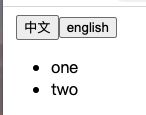- SpringBoot + vue 管理系统
m0_74825565
面试学习路线阿里巴巴springbootvue.js后端
SpringBoot+vue管理系统文章目录SpringBoot+vue管理系统1、成品效果展示2、项目准备3、项目开发3.1、部门管理3.1.1、前端核心代码3.1.2、后端代码实现3.2、员工管理3.2.1、前端核心代码3.2.2、后端代码实现3.3、班级管理3.3.1、前端核心代码3.3.2、后端代码实现3.4、学生管理3.4.1、前端核心代码3.4.2、后端代码实现3.5、数据统计3.5.
- React vs Vue3深度对比与使用场景分析
匹马夕阳
VUE技术集锦react.js前端前端框架
在前端开发领域,React和Vue3是两个备受瞩目的框架。它们都提供了强大的功能和灵活的开发方式,但各自的设计理念、使用方式和适用场景有所不同。本文将深入探讨React和Vue3的区别,通过代码示例和具体的使用场景,帮助开发者更好地理解并选择适合自己的框架。一、核心概念与设计理念1.ReactReact是由Facebook开发的一个JavaScript库,主要用于构建用户界面。它的核心理念是组件化
- compare-form.vue 的 v 来源(来自父组件index.vue中的row行数据)
小丁学Java
产品资质管理系统ubuntulinux运维
文章目录`compare-form.vue`的父组件`compare-form.vue`的`v`来源相关代码片段1.`value`的Prop定义2.`@Watch('value')`及其`watchValue`方法3.与`value`间接相关的代码(影响`v`的初始化或使用)总结子组件compare-form.vue父组件index.vue以下是关于compare-form.vue和其父组件src
- 点击修改按钮图片显示有问题
小丁学Java
产品资质管理系统vue
问题可能出在表单数据的初始化上。在ave-form.vue中,我们需要处理一下从后端返回的图片数据,因为它们可能是JSON字符串格式。vue:src/views/tools/fake-strategy/components/ave-form.vue//...existingcode...@Watch('value')watchValue(v:any){this.$nextTick(()=>{thi
- Vue的测试策略:如何使用单元测试和端对端测试来确保Vue应用的质量
哎 你看
vuevue.js单元测试前端
介绍测试的重要性在开发软件应用的过程中,测试具有重要的作用。它可以帮助开发者捕捉到程序中的错误和漏洞,保证软件的质量。功能性的测试可以帮助确认应用程序或系统满足了其功能需求。测试驱动的开发方式,如TDD(Test-DrivenDevelopment),也被广泛提倡并实践,因为它可以在早期发现并解决问题,提升开发效率。在持续集成和持续发布(CI/CD)的工作流中,自动化测试是保证代码质量的关键,它帮
- Vue的单元测试和端到端测试:确保组件可靠性与应用完整性
哎 你看
vuevue.js单元测试前端
引言在软件开发过程中,测试是保证代码质量和应用稳定性的关键环节。Vue.js作为流行的前端框架,提供了一套完善的测试工具和生态系统,支持开发者进行单元测试和端到端测试。本文将深入探讨如何为Vue组件编写单元测试,并讨论如何使用Cypress等工具进行端到端测试。单元测试1.单元测试的概念单元测试是针对程序中最小的可测试单元进行检查和验证的过程,通常关注函数或方法级别的测试。2.Vue组件的单元测试
- 深入浅出 Pinia:下一代 Vue 状态管理库的核心实践与设计哲学
斯~内克
vue知识点vue.js前端javascript
引言:为什么需要状态管理?在现代前端开发中,随着应用复杂度提升,组件间的数据共享和状态管理成为关键挑战。传统的组件间通信(如props/emit)在跨层级组件或大型应用中显得力不从心,而Vue生态早期的Vuex虽然解决了这一问题,但随着TypeScript的普及和CompositionAPI的推出,开发者对状态管理工具提出了更高要求——这便是Pinia诞生的背景。第一部分:Pinia基础概念1.1
- vue监听中的watch监听(详解)
皓月当空hy
vuevue.js
1、watch选项用于监听数据的变化并执行相应的回调函数。watch选项提供了两个重要的属性:deep和immediate。1.1、深度监听(deep:true)当你需要监听一个对象或数组内部的变化时,可以使用deep:true。这会使得watch监听器递归地监听对象或数组内部的所有嵌套属性的变化。//示例:watch:{ myObject:{ handler(newVal,oldVal){
- Vue.js 组件化开发:从入门到进阶
小李学软件
vue学习前端框架vue.js前端javascript前端框架
Vue.js组件化开发:从入门到进阶大家好,今天我们来聊一聊Vue.js的“组件化开发”。目前Vue开发已经相对成熟了,相信很多朋友对组件化开发并不陌生。如果你对组件化开发已经非常熟悉,看到我的文章,欢迎点个支持一下。如果你是刚入门,我强烈建议学习一下哦。如果你想巩固Vue组件化的知识,非常推荐来学习。一、什么是组件化开发?在进入正题之前,想问大家一个问题:你有没有拼过乐高?如果有的话,你就会知道
- Vue.js组件开发:从基础到进阶
码上飞扬
vue.js
在现代前端开发中,Vue.js因其简洁、灵活和易上手的特点,成为了众多开发者首选的框架之一。组件化是Vue.js的核心思想之一,它让我们能够更高效、模块化地开发应用。在本文中,我们将从Vue.js的组件开发的基础知识开始,逐步探索如何通过Vue.js进行高效的组件化开发。一、Vue.js组件的基础Vue.js中的组件可以理解为一个具有特定功能的代码块,它通常包含视图(HTML)、样式(CSS)和逻
- vue3中测试:单元测试、组件测试、端到端测试
皓月当空hy
vue.js
1、单元测试:单元测试通常适用于独立的业务逻辑、组件、类、模块或函数,不涉及UI渲染、网络请求或其他环境问题。describe('increment',()=>{//测试用例})toBe():用于严格相等比较(===),适用于原始类型或检查引用类型是否指向同一个对象。toEqual():用于深度比较,检查两个对象或数组的内容是否相等(即使它们不是同一个对象)。例如:test('increments
- 现代前端框架渲染机制深度解析:虚拟DOM到编译时优化
桂月二二
前端框架
引言:前端框架的性能进化论TikTokWeb将React18迁移至Vue3后,点击响应延迟降低42%,内存占用减少35%。Shopify采用Svelte重构核心交互模块,首帧渲染速度提升580%。Discord在Next.js14中启用ReactServerComponents后,服务端数据吞吐量增加240%,客户端Bundle体积减少54%。一、主流框架技术架构差异1.1三大范式运行机制对比维度
- 基于SpringBoot+Vue驾校理论课模拟考试系统源码(自动化部署)
.whl
Java学习进阶毕设源码springbootvue.js自动化
DrivingTestSimulationUnity3DProject,subjecttwo,simulateddrivingtest【更新信息】更新时间-2021-1-17解决了方向盘不同机型转动轴心偏离更新时间-2021-2-18加入了手刹系统待更新-2021-6-19(工作太忙少有时间更新,先指出问题)解决了在REC回放下偶然出现的物体回放错位BUG(每一个挂ReplayEntity.cs的
- Vue.js 深入解析:从基础到进阶
sleepwalking450
vue.js前端javascript
Vue.js是一个渐进式JavaScript框架,专注于构建用户界面,尤其是单页面应用(SPA)。它的设计理念强调“渐进式框架”,即你可以从最基本的功能开始,逐步引入更多的功能以应对复杂的应用需求。Vue.js既可以作为一个简单的UI渲染引擎,也可以通过VueRouter和Vuex扩展为强大的全栈开发工具。本篇文章将对Vue.js的核心特性进行更加细致的分析,帮助你从基本的入门知识到更加复杂的高级
- Vue.js 入门指南:从基础到实战
阿绵
前端vue.js前端javascript
Vue.js是一款流行的渐进式JavaScript框架,广泛用于构建交互式Web界面。它具有简单易学、轻量级、高性能的特点,适合前端新手入门。本文将从Vue的基本概念入手,详细介绍Vue的生命周期及常见用法,帮助你快速上手Vue开发官网:https://cn.vuejs.org/1.Vue.js介绍1.1Vue的特点易学易用:Vue采用直观的模板语法,降低了学习成本响应式数据绑定:使用双向绑定(v
- 深入浅出 Vue.js:从基础到进阶的全面总结
多年以后_
vue.js前端javascript
深入浅出Vue.js:从基础到进阶的全面总结Vue.js是一个用于构建用户界面的渐进式框架。它不仅易于上手,还能通过其强大的生态系统支持复杂的应用开发。本文将从基础到进阶,全面总结Vue.js的核心概念、常用技术和最佳实践,并提供代码示例以便更好地理解。目录Vue.js基础Vue实例模板语法计算属性和侦听器组件系统组件基础父子组件通信插槽VueRouter路由基础动态路由匹配嵌套路由Vuex状态管
- vue3中子组件调用父组件事件
小华0000
vue.jsjavascript前端
在Vue3中,子组件调用父组件的事件(或方法)的方式与Vue2类似,但Vue3引入了CompositionAPI,这可能会改变你组织代码的方式。不过,基本的通信机制——通过自定义事件($emit)通知父组件——仍然保持不变。以下是如何在Vue3中使用OptionsAPI和CompositionAPI的示例:使用OptionsAPI父组件(ParentComponent.vue)父组件importC
- fastapi 大型应用_FastApi项目实战 - 爱投票管理系统(一)
赌徒梦
fastapi大型应用
一、闲来无事,在工作之余自己研究了一下python的异步框架-fastapi,并写包括1、部门管理2、角色管理3、用户管理4、菜单管理5、登录日志6、操作日志7、添加反爬机制六个基础功能模块,演示链接:https://www.lovevote.cn,账号:admin,密码:admin由于我的电脑问题,下载的vue依赖包有几个发生了版本冲突,打包部署后偶尔会在点击菜单按钮时发生前端延时(这时表现为缓
- springboot + vue 前后端完全分离的博客项目
明日再死
SpringBootvue.jsspringbootrestful
文章目录前言一、运行截图二、前后台功能前端构架后端架构运行截图总结源码地址前言学完了springboot后,又花了十一天学完了禹神的vue2.x与3.x,一直想找机会练习一下vue来制作单页面前端程序,正巧,B站上看了一位叫markerhub的up主发了这个项目,于是我看了看源码,做了一些改进(源码学习,并非白嫖谢谢)一、运行截图登录界面注册界面找回密码界面二、前后台功能前端构架vue2.xvue
- Vue3 动态创建组件实现数据绑定(h函数)
CrxzYia
前端前端javascriptvue.js
经常看到框架里使用h函数动态创建组件,可自己使用时发现数据无法绑定,我使用的代码如下{span:6,label:"区",path:"groupId",component:h(NSelect,{options:groupIdOptions.value,value:modalRef.value.groupId,"onUpdate:value":(value:string)=>modalRef.valu
- TypeScript 中的 type 和 interface:你真的了解它们的不同吗?
初见雨夜
前端typescriptjavascript前端
如果你有写过Vue3的项目,那么对TypeScript肯定不会陌生。不管是公司新项目技术选型还是个人学习开发新的前端项目,Vue3+TypeScript已经成为首选技术方案之一在TypeScript这个强大的静态类型系统中,type和interface是两个重要的关键字,用于定义和描述数据类型。然而,这两者之间的区别是什么,在实际开发过程中我们要怎么用呢?废话不说,直接进入正题,就让我们一起深入探
- vite+vue+ts+element-plus从零开发管理后台框架(04)-整体布局
vue3
布局参考文档,整体使用上、左、右的布局。编辑src/views/Main.vue,内容如下。HeaderAsideMain.el-header{background-color:red;}.el-aside{background-color:green;}.el-main{background-color:blue;}浏览器访问http://localhost:5173/#/,会发现高度没有铺满。
- vite+vue+ts+element-plus从零开发管理后台框架(05)-菜单和路由
vue3
视图新建src/views/Home.vue,内容如下。首页新建src/views/sys/AdmUserPassword.vue,内容如下。密码更新新建src/views/sys/AdmUser.vue,内容如下。管理员新建src/views/log/AdmUserLogin.vue,内容如下。管理员登录日志路由配置编辑src/router/index.ts,修改Main路由如下。{path:'
- Vue中如何轻松实现可调整大小的容器布局——vue-resizeable组件教程
介绍vue-resizeable是一款在vue项目中可调整各个区域大小的组件,支持任意组合,支持自定义样式演示体验地址https://liquanquan.top/vue-admin/resizablenpm地址https://www.npmjs.com/package/vue-resizeablegithubhttps://github.com/taoman/vue-resizeable欢迎各位
- avue富文本编辑器如何保证上传图片正常
R-sz
java前端javascript
{label:"内容",prop:"content",component:'AvueUeditor',action:"/api/blade-resource/oss/endpoint/put-file",propsHttp:{res:"data",url:"link",},hide:true,viewDisplay:false,minRows:6,span:24,rules:[{required:
- uniapp-首页模块
Brilliant Nemo
uniappuni-appjavascript前端
小兔鲜儿-首页模块涉及知识点:组件通信、组件自动导入、数据渲染、触底分页加载、下拉刷新等。自定义导航栏参考效果:自定义导航栏的样式需要适配不同的机型。:::tip操作步骤准备组件静态结构修改页面配置,隐藏默认导航栏,修改文字颜色样式适配->安全区域:::静态结构新建业务组件:src/pages/index/componets/CustomNavbar.vue<scriptsetuplang
- Vue.js 详细介绍
DOMINICHZL
vue.jsvue.js
1.引言在前端开发领域,Vue.js无疑是一个备受瞩目的框架。它以其轻量、易用和高效的特点,迅速成为开发者们的首选。无论你是前端新手,还是有一定经验的开发者,Vue.js都能为你提供强大的支持。本文将带你从零开始,深入了解Vue.js的核心概念、使用方法以及最佳实践。2.Vue.js简介2.1什么是Vue.js?Vue.js是一套用于构建用户界面的渐进式JavaScript框架。与其他大型框架不同
- Vue学习教程-16html标签元素绑定事件
番茄番茄君
vue.js学习前端
文章目录前言一、表单数据绑定事件二、多媒体元素绑定1.图片img和视频元素video三、容器元素绑定事件前言在Vue中,你可以通过v-on指令(或在Vue2.x中简写为@)来绑定事件。这种方式允许你监听DOM事件,并在触发时执行一些JavaScript代码。常见的元素主要是表单数据元素、多媒体元素和容器元素。一、表单数据绑定事件常见的表单数据元素1.文本输入框元素3.多选框元素4.下拉框元素5.按
- React面试(一)
束尘
vue.jsjavascript前端react.js
文章目录1.vue和react有什么异同2.useEffect中为什么不能使用异步3.useEffect和useLayoutEffect的区别4.react的生命周期5.state和prop的区别6.受控组件和非受控组件7.为什么react16之后不把事件挂载到document上了8.讲一下react的hoc,它可以用来做什么?9.讲一下对reactfiber的理解10.讲一下react.comp
- 2025届毕业设计选题参考,包含网站管理系统开发,微信小程序开发,APP开发,大数据分析,人工智能
平姐设计
计算机毕业设计选题清单微信小程序开发语言人工智能数据分析
网站开发选题:1、基于Java的企业食堂管理系统的设计与实现2、基于web的办公平台3、综合学工服务系统4、超市管理系统5、基于springboot的云笔记共享系统6、毕业生实习管理系统7、驾校预约管理系统8、基于Java的航空订票系统9、企业资源规划系统10、洗衣房预约管理系统的设计与实现11、桌面端有声小说12、基于Python的毕业生就业率分析管理系统的设计与实现13、基于VUE的富平县农产
- 深入浅出Java Annotation(元注解和自定义注解)
Josh_Persistence
Java Annotation元注解自定义注解
一、基本概述
Annontation是Java5开始引入的新特征。中文名称一般叫注解。它提供了一种安全的类似注释的机制,用来将任何的信息或元数据(metadata)与程序元素(类、方法、成员变量等)进行关联。
更通俗的意思是为程序的元素(类、方法、成员变量)加上更直观更明了的说明,这些说明信息是与程序的业务逻辑无关,并且是供指定的工具或
- mysql优化特定类型的查询
annan211
java工作mysql
本节所介绍的查询优化的技巧都是和特定版本相关的,所以对于未来mysql的版本未必适用。
1 优化count查询
对于count这个函数的网上的大部分资料都是错误的或者是理解的都是一知半解的。在做优化之前我们先来看看
真正的count()函数的作用到底是什么。
count()是一个特殊的函数,有两种非常不同的作用,他可以统计某个列值的数量,也可以统计行数。
在统
- MAC下安装多版本JDK和切换几种方式
棋子chessman
jdk
环境:
MAC AIR,OS X 10.10,64位
历史:
过去 Mac 上的 Java 都是由 Apple 自己提供,只支持到 Java 6,并且OS X 10.7 开始系统并不自带(而是可选安装)(原自带的是1.6)。
后来 Apple 加入 OpenJDK 继续支持 Java 6,而 Java 7 将由 Oracle 负责提供。
在终端中输入jav
- javaScript (1)
Array_06
JavaScriptjava浏览器
JavaScript
1、运算符
运算符就是完成操作的一系列符号,它有七类: 赋值运算符(=,+=,-=,*=,/=,%=,<<=,>>=,|=,&=)、算术运算符(+,-,*,/,++,--,%)、比较运算符(>,<,<=,>=,==,===,!=,!==)、逻辑运算符(||,&&,!)、条件运算(?:)、位
- 国内顶级代码分享网站
袁潇含
javajdkoracle.netPHP
现在国内很多开源网站感觉都是为了利益而做的
当然利益是肯定的,否则谁也不会免费的去做网站
&
- Elasticsearch、MongoDB和Hadoop比较
随意而生
mongodbhadoop搜索引擎
IT界在过去几年中出现了一个有趣的现象。很多新的技术出现并立即拥抱了“大数据”。稍微老一点的技术也会将大数据添进自己的特性,避免落大部队太远,我们看到了不同技术之间的边际的模糊化。假如你有诸如Elasticsearch或者Solr这样的搜索引擎,它们存储着JSON文档,MongoDB存着JSON文档,或者一堆JSON文档存放在一个Hadoop集群的HDFS中。你可以使用这三种配
- mac os 系统科研软件总结
张亚雄
mac os
1.1 Microsoft Office for Mac 2011
大客户版,自行搜索。
1.2 Latex (MacTex):
系统环境:https://tug.org/mactex/
&nb
- Maven实战(四)生命周期
AdyZhang
maven
1. 三套生命周期 Maven拥有三套相互独立的生命周期,它们分别为clean,default和site。 每个生命周期包含一些阶段,这些阶段是有顺序的,并且后面的阶段依赖于前面的阶段,用户和Maven最直接的交互方式就是调用这些生命周期阶段。 以clean生命周期为例,它包含的阶段有pre-clean, clean 和 post
- Linux下Jenkins迁移
aijuans
Jenkins
1. 将Jenkins程序目录copy过去 源程序在/export/data/tomcatRoot/ofctest-jenkins.jd.com下面 tar -cvzf jenkins.tar.gz ofctest-jenkins.jd.com &
- request.getInputStream()只能获取一次的问题
ayaoxinchao
requestInputstream
问题:在使用HTTP协议实现应用间接口通信时,服务端读取客户端请求过来的数据,会用到request.getInputStream(),第一次读取的时候可以读取到数据,但是接下来的读取操作都读取不到数据
原因: 1. 一个InputStream对象在被读取完成后,将无法被再次读取,始终返回-1; 2. InputStream并没有实现reset方法(可以重
- 数据库SQL优化大总结之 百万级数据库优化方案
BigBird2012
SQL优化
网上关于SQL优化的教程很多,但是比较杂乱。近日有空整理了一下,写出来跟大家分享一下,其中有错误和不足的地方,还请大家纠正补充。
这篇文章我花费了大量的时间查找资料、修改、排版,希望大家阅读之后,感觉好的话推荐给更多的人,让更多的人看到、纠正以及补充。
1.对查询进行优化,要尽量避免全表扫描,首先应考虑在 where 及 order by 涉及的列上建立索引。
2.应尽量避免在 where
- jsonObject的使用
bijian1013
javajson
在项目中难免会用java处理json格式的数据,因此封装了一个JSONUtil工具类。
JSONUtil.java
package com.bijian.json.study;
import java.util.ArrayList;
import java.util.Date;
import java.util.HashMap;
- [Zookeeper学习笔记之六]Zookeeper源代码分析之Zookeeper.WatchRegistration
bit1129
zookeeper
Zookeeper类是Zookeeper提供给用户访问Zookeeper service的主要API,它包含了如下几个内部类
首先分析它的内部类,从WatchRegistration开始,为指定的znode path注册一个Watcher,
/**
* Register a watcher for a particular p
- 【Scala十三】Scala核心七:部分应用函数
bit1129
scala
何为部分应用函数?
Partially applied function: A function that’s used in an expression and that misses some of its arguments.For instance, if function f has type Int => Int => Int, then f and f(1) are p
- Tomcat Error listenerStart 终极大法
ronin47
tomcat
Tomcat报的错太含糊了,什么错都没报出来,只提示了Error listenerStart。为了调试,我们要获得更详细的日志。可以在WEB-INF/classes目录下新建一个文件叫logging.properties,内容如下
Java代码
handlers = org.apache.juli.FileHandler, java.util.logging.ConsoleHa
- 不用加减符号实现加减法
BrokenDreams
实现
今天有群友发了一个问题,要求不用加减符号(包括负号)来实现加减法。
分析一下,先看最简单的情况,假设1+1,按二进制算的话结果是10,可以看到从右往左的第一位变为0,第二位由于进位变为1。
- 读《研磨设计模式》-代码笔记-状态模式-State
bylijinnan
java设计模式
声明: 本文只为方便我个人查阅和理解,详细的分析以及源代码请移步 原作者的博客http://chjavach.iteye.com/
/*
当一个对象的内在状态改变时允许改变其行为,这个对象看起来像是改变了其类
状态模式主要解决的是当控制一个对象状态的条件表达式过于复杂时的情况
把状态的判断逻辑转移到表示不同状态的一系列类中,可以把复杂的判断逻辑简化
如果在
- CUDA程序block和thread超出硬件允许值时的异常
cherishLC
CUDA
调用CUDA的核函数时指定block 和 thread大小,该大小可以是dim3类型的(三维数组),只用一维时可以是usigned int型的。
以下程序验证了当block或thread大小超出硬件允许值时会产生异常!!!GPU根本不会执行运算!!!
所以验证结果的正确性很重要!!!
在VS中创建CUDA项目会有一个模板,里面有更详细的状态验证。
以下程序在K5000GPU上跑的。
- 诡异的超长时间GC问题定位
chenchao051
jvmcmsGChbaseswap
HBase的GC策略采用PawNew+CMS, 这是大众化的配置,ParNew经常会出现停顿时间特别长的情况,有时候甚至长到令人发指的地步,例如请看如下日志:
2012-10-17T05:54:54.293+0800: 739594.224: [GC 739606.508: [ParNew: 996800K->110720K(996800K), 178.8826900 secs] 3700
- maven环境快速搭建
daizj
安装mavne环境配置
一 下载maven
安装maven之前,要先安装jdk及配置JAVA_HOME环境变量。这个安装和配置java环境不用多说。
maven下载地址:http://maven.apache.org/download.html,目前最新的是这个apache-maven-3.2.5-bin.zip,然后解压在任意位置,最好地址中不要带中文字符,这个做java 的都知道,地址中出现中文会出现很多
- PHP网站安全,避免PHP网站受到攻击的方法
dcj3sjt126com
PHP
对于PHP网站安全主要存在这样几种攻击方式:1、命令注入(Command Injection)2、eval注入(Eval Injection)3、客户端脚本攻击(Script Insertion)4、跨网站脚本攻击(Cross Site Scripting, XSS)5、SQL注入攻击(SQL injection)6、跨网站请求伪造攻击(Cross Site Request Forgerie
- yii中给CGridView设置默认的排序根据时间倒序的方法
dcj3sjt126com
GridView
public function searchWithRelated() {
$criteria = new CDbCriteria;
$criteria->together = true; //without th
- Java集合对象和数组对象的转换
dyy_gusi
java集合
在开发中,我们经常需要将集合对象(List,Set)转换为数组对象,或者将数组对象转换为集合对象。Java提供了相互转换的工具,但是我们使用的时候需要注意,不能乱用滥用。
1、数组对象转换为集合对象
最暴力的方式是new一个集合对象,然后遍历数组,依次将数组中的元素放入到新的集合中,但是这样做显然过
- nginx同一主机部署多个应用
geeksun
nginx
近日有一需求,需要在一台主机上用nginx部署2个php应用,分别是wordpress和wiki,探索了半天,终于部署好了,下面把过程记录下来。
1. 在nginx下创建vhosts目录,用以放置vhost文件。
mkdir vhosts
2. 修改nginx.conf的配置, 在http节点增加下面内容设置,用来包含vhosts里的配置文件
#
- ubuntu添加admin权限的用户账号
hongtoushizi
ubuntuuseradd
ubuntu创建账号的方式通常用到两种:useradd 和adduser . 本人尝试了useradd方法,步骤如下:
1:useradd
使用useradd时,如果后面不加任何参数的话,如:sudo useradd sysadm 创建出来的用户将是默认的三无用户:无home directory ,无密码,无系统shell。
顾应该如下操作:
- 第五章 常用Lua开发库2-JSON库、编码转换、字符串处理
jinnianshilongnian
nginxlua
JSON库
在进行数据传输时JSON格式目前应用广泛,因此从Lua对象与JSON字符串之间相互转换是一个非常常见的功能;目前Lua也有几个JSON库,本人用过cjson、dkjson。其中cjson的语法严格(比如unicode \u0020\u7eaf),要求符合规范否则会解析失败(如\u002),而dkjson相对宽松,当然也可以通过修改cjson的源码来完成
- Spring定时器配置的两种实现方式OpenSymphony Quartz和java Timer详解
yaerfeng1989
timerquartz定时器
原创整理不易,转载请注明出处:Spring定时器配置的两种实现方式OpenSymphony Quartz和java Timer详解
代码下载地址:http://www.zuidaima.com/share/1772648445103104.htm
有两种流行Spring定时器配置:Java的Timer类和OpenSymphony的Quartz。
1.Java Timer定时
首先继承jav
- Linux下df与du两个命令的差别?
pda158
linux
一、df显示文件系统的使用情况,与du比較,就是更全盘化。 最经常使用的就是 df -T,显示文件系统的使用情况并显示文件系统的类型。 举比例如以下: [root@localhost ~]# df -T Filesystem Type &n
- [转]SQLite的工具类 ---- 通过反射把Cursor封装到VO对象
ctfzh
VOandroidsqlite反射Cursor
在写DAO层时,觉得从Cursor里一个一个的取出字段值再装到VO(值对象)里太麻烦了,就写了一个工具类,用到了反射,可以把查询记录的值装到对应的VO里,也可以生成该VO的List。
使用时需要注意:
考虑到Android的性能问题,VO没有使用Setter和Getter,而是直接用public的属性。
表中的字段名需要和VO的属性名一样,要是不一样就得在查询的SQL中
- 该学习笔记用到的Employee表
vipbooks
oraclesql工作
这是我在学习Oracle是用到的Employee表,在该笔记中用到的就是这张表,大家可以用它来学习和练习。
drop table Employee;
-- 员工信息表
create table Employee(
-- 员工编号
EmpNo number(3) primary key,
-- 姓

